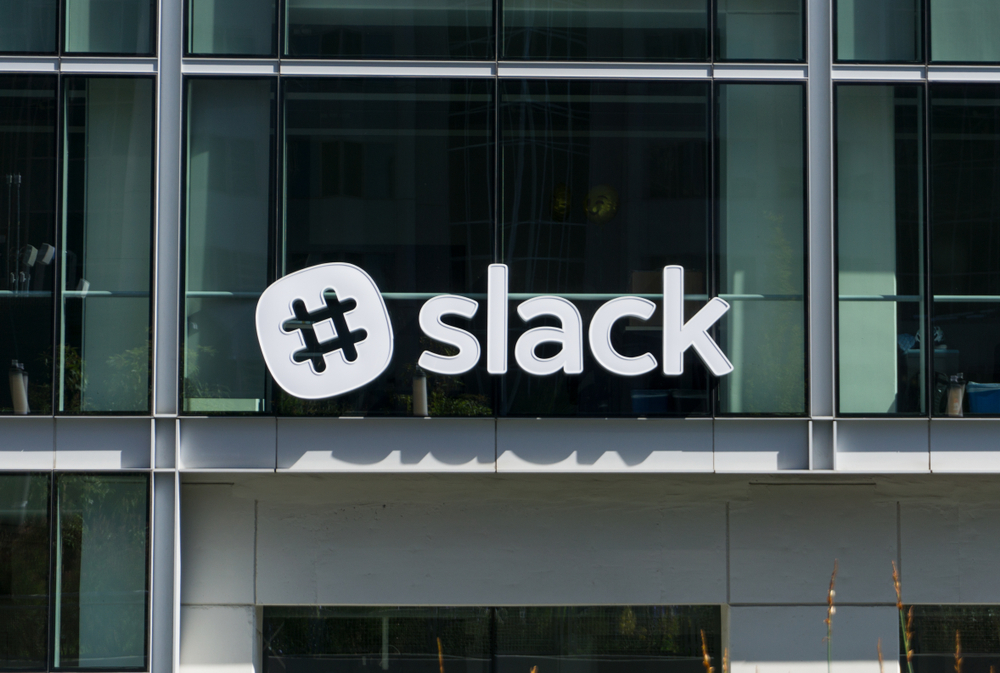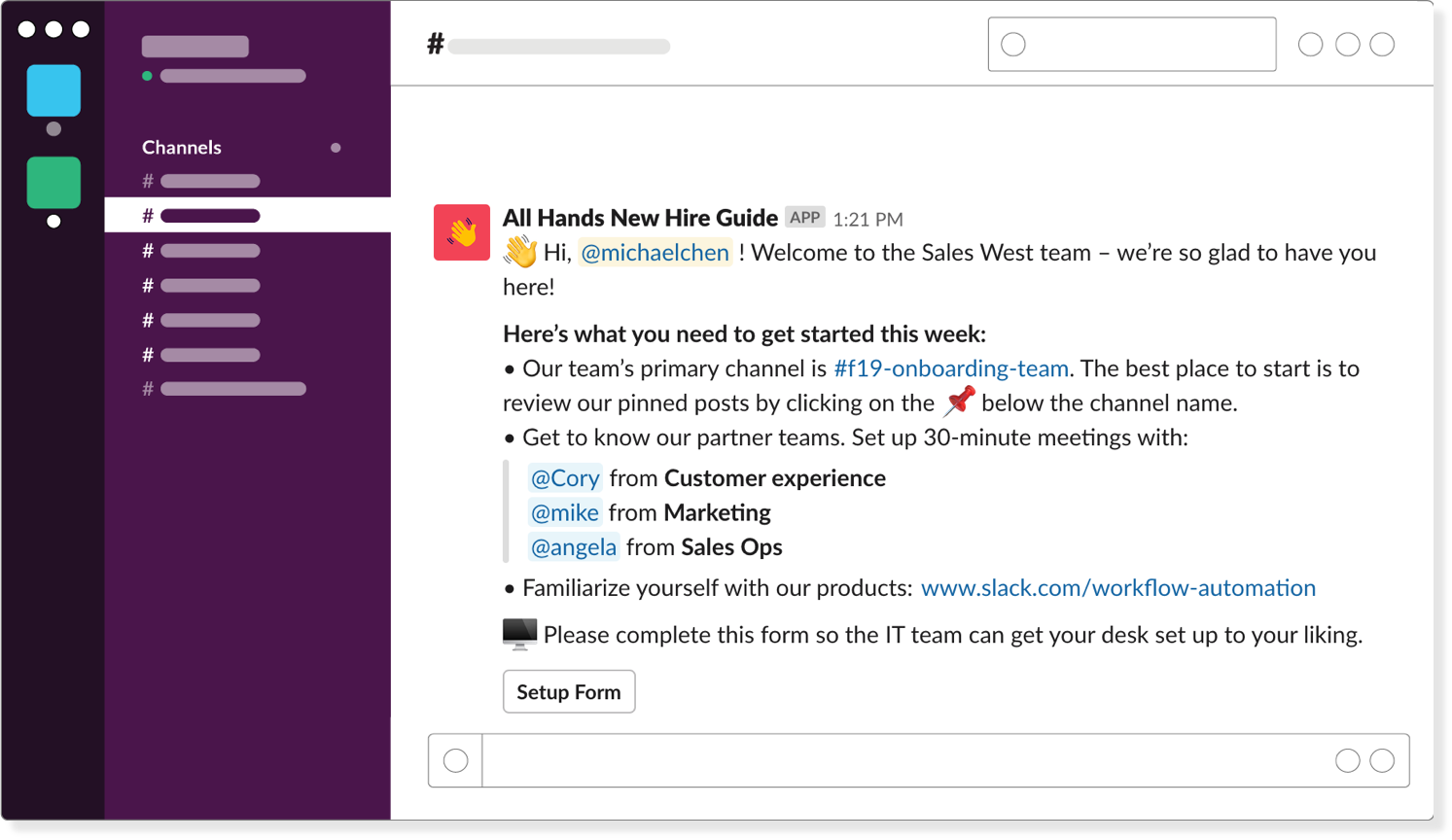Slack's new integrations signal the end to war on email
Users can now access collaboration features inside Gmail and Outlook


Slack has added some new features to its collaboration platform which aim to embrace the power of email, the very tool it aimed to kill off over five years ago.
Instead of having the two services operate alongside one another, now those in your organisation who aren't on Slack, or have just started and haven't yet received credentials, can still benefit from its collaboration features.
Directly addressing an individual in Slack via it's '@-mention' feature can now be utilised within email, with notifications appearing in the employee's inbox if they are not on the platform or logged in.
Replies sent from an employee's inbox will beam straight back to the relevant channel just as if the interaction was taking place on just the one platform.
Admins will need to tweak their company's account to allow outside users to communicate with those inside the organisation in this way, but it's a step closer to being a more unified collaboration tool.
This supports Slack's existing Outlook and Gmail functionality, which allows users to forward emails into a channel where members can view and discuss the content and plan responses from inside Slack.
Another interesting announcement, made at the company's Frontiers conference in San Franciso, relates to its 'Workflow Builder' tool which will enable any user within Slack to build apps for routine functions without coding knowledge.
Get the ITPro daily newsletter
Sign up today and you will receive a free copy of our Future Focus 2025 report - the leading guidance on AI, cybersecurity and other IT challenges as per 700+ senior executives

The tool, which is launching later this year, will be capable of automating functions, such as completing and filing a benefits request form to HR or sending messages to help new starters find the right channels to join, saving other workers from sacrificing time to give a platform tutorial.
If this sounds familiar then you'd be right. Slack announced back in February two new toolkits that would also allow non-coders to build apps within Slack, however Workflow Builder appears to be geared towards routine automation rather than the more technical backend functions of the platform.
Slack's integration with Outlook and Google Calendar is also becoming stronger as any status you set within Calendar will be automatically synced to Slack, such as being away from the office for an event or when you have a meeting booked in.
As many business meetings tend to be virtual nowadays, integration with calendars will allow other users to see who your meeting is with and provide joining options directly within Slack thanks to partnerships with Hangouts, Zooma and Webex.
There is also a change coming to Slack's search function which, although fast and expansive, isn't always the most intuitive or organised. Slack aims to address this by adding new features to make it easier to view unread messages quicker, allow faster navigation between channels to find the relevant person, and better functionality when sifting through channel archives. These features will be available in the coming weeks.
Slack's five-year slog of a battle with email has proved fruitless; email still exists and seems like it's here to stay. Google has invested into it to a greater extent recently despite the wide adoption of the platform which depends on the virality of its freemium model.

Connor Jones has been at the forefront of global cyber security news coverage for the past few years, breaking developments on major stories such as LockBit’s ransomware attack on Royal Mail International, and many others. He has also made sporadic appearances on the ITPro Podcast discussing topics from home desk setups all the way to hacking systems using prosthetic limbs. He has a master’s degree in Magazine Journalism from the University of Sheffield, and has previously written for the likes of Red Bull Esports and UNILAD tech during his career that started in 2015.
-
 Westcon-Comstor and Vectra AI launch brace of new channel initiatives
Westcon-Comstor and Vectra AI launch brace of new channel initiativesNews Westcon-Comstor and Vectra AI have announced the launch of two new channel growth initiatives focused on the managed security service provider (MSSP) space and AWS Marketplace.
By Daniel Todd Published
-
 Third time lucky? Microsoft finally begins roll-out of controversial Recall feature
Third time lucky? Microsoft finally begins roll-out of controversial Recall featureNews The Windows Recall feature has been plagued by setbacks and backlash from security professionals
By Emma Woollacott Published
-
 'Digital hide-and-seek': Workers are wasting hundreds of hours a year sourcing the information they need to carry out their role
'Digital hide-and-seek': Workers are wasting hundreds of hours a year sourcing the information they need to carry out their roleNews Knowledge workers globally are wasting a quarter of their working week tracking down information, new research from Atlassian has revealed.
By George Fitzmaurice Published
-
 Untethered: How CIOs and CISOs are paving the way for the new hybrid workforce
Untethered: How CIOs and CISOs are paving the way for the new hybrid workforceWhitepaper Effective techniques to transition from exposed legacy infrastructure to an effective zero trust strategy
By ITPro Published
-
 Unlocking the power of your digital services
Unlocking the power of your digital servicesSponsored Businesses have invested significant cash into technology since COVID-19, but are they really getting their money's worth?
By ITPro Published
-
 Delivering fast and secure digital experiences for the modern hybrid workforce
Delivering fast and secure digital experiences for the modern hybrid workforceWhitepaper A new approach to digital experience monitoring that can monitor the health of all systems
By ITPro Published
-
 Collaboration is the glue that holds your business together
Collaboration is the glue that holds your business togetherSPONSORED A combination of productivity tools and cloud telephony can enable the best from your workforce
By ITPro Published
-
 The future of work and the forgotten workforce
The future of work and the forgotten workforcewhitepaper How to deploy a mobile-first strategy so no one gets left behind
By ITPro Published
-
 The case for an accelerated device refresh cycle
The case for an accelerated device refresh cycleWhitepaper Achieving a more cost-effective device lifecycle overall
By ITPro Published
-
 Employees are choosing how they work
Employees are choosing how they workWhitepaper And with the right secure digital strategy, this could be a great thing for your business: today and far into the future
By ITPro Published